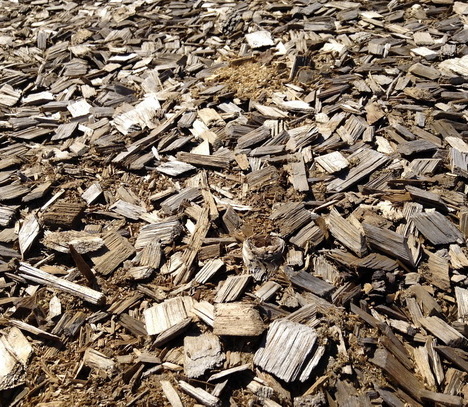ANTIOXIDANT PROPERTIES OF EXTRACTIVE SUBSTANCES OF DESTRUCTION PRODUCTS OF BARK-WOOD WASTE OF LONG SHELF LIFE
UDK 676.08:67.08:577.19
Abstract
The antioxidant activity of ethyl acetate and hexane extracts of the products of the destruction of bark-wood waste (BWW) from the bark dump of Syktyvkar LDK OJSC, located in the Forestry district of Syktyvkar, was investigated. It was found that the total content of phenolic compounds in them was quite high and varied from 46 to 74 mg (GAE) /g of dry extract. However, the results of determining the ability of the studied substances from BWW to bind DPH radicals and chelate Fe2+ ions did not reveal either radical-binding or significant iron-chelating activity. It was shown that the extracts had an inhibitory effect on the specific growth rate of Escherichia coli, and also stimulated the expression of the katG gene. It was found that the strength of the response to oxidative stress in the presence of the tested extracts, i.e. their ability to exert an antioxidant effect, depended on the time at which the oxidant was added. The short time interval between incubation with extracts and the addition of peroxide led to an additive effect, as a result of which the oxidative effect on bacterial cultures was enhanced. A longer incubation with extracts before the addition of peroxide, on the contrary, provided stimulation of the antioxidant gene katG, which ultimately contributed to protection from the action of peroxide.
Downloads
Metrics
References
Gosudarstvennyy podkhod k utilizatsii otkhodov lesnoy promyshlennosti: opyt Respubliki Komi [State approach to the disposal of forest industry waste: experience of the Komi Republic]. URL: https://lesprominform.ru/jarticles.html?id=5071. (in Russ.).
Volodin V.V., Shubakov A.A., Volodina S.O., Shergina N.N., Vasilov R.G. Agrarnaya nauka Yevro-Severo-Vostoka, 2022, vol. 23, no. 5, pp. 611–632. DOI: 10.30766/2072-9081.2022.23.5.611-632. (in Russ.).
Zyryanov M.A., Chistova N.G., Shvetsov V.A., Zaripov Z.Z. Vestnik KrasGAU, 2010, no. 4, pp. 288‒291. (in Russ.).
Lipunov I.N., Nikiforov A.F., Pervova I.G., Tolmacheva N.O. Vodnoye khozyaystvo Rossii: problemy, tekhnologii, upravleniye, 2018, no. 6, pp. 101–112. DOI: 10.35567/1999-4508-2018-6-8. (in Russ.).
Shibeka L.A., Protas M.V. Trudy Kol'skogo nauchnogo tsentra RAN, 2020, vol. 11, no. 3–4, pp. 223–226. DOI: 10.37614/2307-5252.2020.3.4.048. (in Russ.).
Babkin V.A., Ostroukhova L.A., Trofimova N.N. Biomassa listvennitsy: ot khimicheskogo sostava do innovatsionnykh produktov. [Larch biomass: from chemical composition to innovative products]. Novosibirsk, 2011, 236 p. (in Russ.).
Babkin V.A. Innovatika i ekspertiza, 2017, vol. 2, pp. 210–224. (in Russ.).
Metsämuuronen S., Sirén H. Phytochemistry Reviews, 2019, vol. 18, pp. 623–664. DOI: 10.1007/s11101-019-09630-2.
Levdanskiy V.A., Levdanskiy A.V., Kuznetsov B.N. Khimiya rastitel'nogo syr'ya, 2022, no. 4, pp. 107–113. DOI: 10.14258/jcprm.20220411959. (in Russ.).
Dion C., Chappuis E., Rippol C. Nutrition and Metabolism, 2016, vol. 13, article 28. DOI: 10.1186/s12986-016-0086-x.
Alternnative Medicine Review, 2000, vol. 5, no. 5, pp. 463–466.
Ufimtsev K.G., Beshley I.V., Shirshova T.I. Teoreticheskaya i prikladnaya ekologiya, 2022, no. 4, pp. 132–138. DOI: 10.25750/1995-4301-2022-4-144-150. (in Russ.).
Shirshova T.I., Beshley I.V., Ufimtsev K.G. Teoreticheskaya i prikladnaya ekologiya, 2024, no. 4. pp. 91–98. DOI: 10.25750/1995-4301-2023-4-091-098. (in Russ.).
Wu L.-C., Hsu H.-W., Chen Y.-C., Chiu C.-C., Lin Y.-I., Ho J.-A.A. Food Chemistry, 2006, vol. 95, no. 2, pp. 319–327. DOI: 10.1016/j.foodchem.2005.01.002.
Shyur L.-F., Tsung J.-H., Chen J.-H., Chiu C.-Y., Lo C.-P. International Journal of Applied Science and Engineering, 2005, vol. 3, pp. 195–202. DOI: 10.6703/IJASE.2005.3(3).195.
Kim H.-J., Chen F., Wang X., Chung H.-Y., Jin Z. Journal of Agricultural and Food Chemistry, 2005, vol. 53, no. 20, pp. 7691–7695. DOI: 10.1021/jf050833e.
Bezmaternykh K.V., Shirshova T.I., Beshley I.V., Matistov N.V., Smirnova G.V., Oktyabr'skiy O.N., Volodin V.V. Khimiko-farmatsevticheskiy zhurnal, 2014, vol. 48, no. 2, pp. 36–40. (in Russ.).
Shabarov A.V., Dadali V.A., Makarov V.G. Biokhimicheskiye osnovy deystviya mikrokomponentov pishchi. [Biochem-ical basis of the action of food microcomponents]. Moscow, 2003, 184 p. (in Russ.).
Storz G., Imlay J.A. Current Opinion in Microbiology, 1999, vol. 2, no. 2, pp. 188–194. DOI: 10.1016/S1369-5274(99)80033-2.

Copyright (c) 2024 chemistry of plant raw material

This work is licensed under a Creative Commons Attribution 4.0 International License.

This work is licensed under a Creative Commons Attribution 4.0 International License.
The authors, which are published in this journal, agree to the following conditions:
1. Authors retain the copyright to the work and transfer to the journal the right of the first publication along with the work, at the same time licensing it under the terms of the Creative Commons Attribution License, which allows others to distribute this work with the obligatory indication of the authorship of this work and a link to the original publication in this journal .
2. The authors retain the right to enter into separate, additional contractual agreements for the non-exclusive distribution of the version of the work published by this journal (for example, to place it in the university depository or to publish it in a book), with reference to the original publication in this journal.
3. Authors are allowed to post their work on the Internet (for example, in a university repository or on their personal website) before and during the review process of this journal, as this may lead to a productive discussion, as well as more links to this published work.











